December 7, 2014 at 10:15 pm
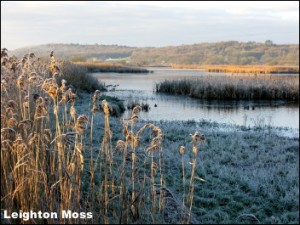 On Wednesday the coldest place in Britain was Leighton Moss at minus 5 °C and I was in the hide there before 8.00am. Everywhere looked superb in the hoar frost and better still as an Otter fished in a far off bay. Two Bitterns were seen but as usual they were too far away to provide a photo. A Kingfisher flew past the hide several times so for this weeks gallery I have provided some of the shots I took of Kingfishers this summer. Click here
On Wednesday the coldest place in Britain was Leighton Moss at minus 5 °C and I was in the hide there before 8.00am. Everywhere looked superb in the hoar frost and better still as an Otter fished in a far off bay. Two Bitterns were seen but as usual they were too far away to provide a photo. A Kingfisher flew past the hide several times so for this weeks gallery I have provided some of the shots I took of Kingfishers this summer. Click here
Last Sunday dawned a perfect winters day as I walked along the Pennine Way at Blackstone Edge. I was hoping to encounter Twite or Snow Bunting but saw neither only Red Grouse were active plus a low flying skein of Pink Footed Geese. In the garden we still have Willow Tit and Nuthatch feeding plus an out of season Reed Bunting.
November 30, 2014 at 7:42 pm
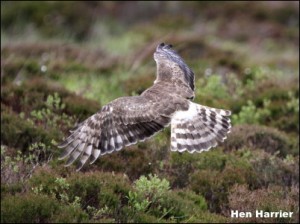 Ringtail is the name given to a female Hen Harrier or a juvenile in its first winter when it is difficult to tell the sexes apart. The name comes from the white rump and is clearly visible as shown in this weeks photo. There is no doubt that any sightings of a Hen Harrier make a day out in the hills most memorable and I have included some of this years photos taken on Islay in this weeks gallery. Click Here
Ringtail is the name given to a female Hen Harrier or a juvenile in its first winter when it is difficult to tell the sexes apart. The name comes from the white rump and is clearly visible as shown in this weeks photo. There is no doubt that any sightings of a Hen Harrier make a day out in the hills most memorable and I have included some of this years photos taken on Islay in this weeks gallery. Click Here
The event of the week was the reappearance in the garden of the Willow Tit after an absence of nearly two years. It appeared on the 23rd November and has fed most days since then. A Grey Wagtail fed on the lawn on the 29th and most days we now have twenty or more species feeding.
November is always the dullest month of the year and this November has followed that trend. The result is that the camera has been on the shelf far too much as there is no substitute for the sun.
November 24, 2014 at 7:21 pm
 Many people have been collecting my DVDs over the last five years and as I am to stop giving my film shows in fifteen months time I have decided to offer a special rate for them for Christmas.
Many people have been collecting my DVDs over the last five years and as I am to stop giving my film shows in fifteen months time I have decided to offer a special rate for them for Christmas.
You can purchase any two DVDs for £20 plus £2 p&p. This offer may be obtained through my website by Clicking Here or by telephoning me on 01706 631770 or alternatively sending me a cheque to:
Gordon Yates
3 Saxonholme Road
Castleton
Rochdale
OL11 2YA
November 23, 2014 at 4:07 pm
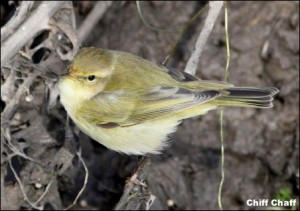
On the 18th on Hopwood a Chiff Chaff was seen but it quickly disappeared in the scrub. I always wonder how many winter in Britain and go unnoticed. Two years ago in Middleton a Siberian one was found and caused quite a stir in the twitchers circles.
At Stakehill on the 17th the rooftop Lapwings increased to an all-time record of 485 and still there were no Golden Plover with them.
In the garden eight Long Tailed Tits were the first of the winter. The big mystery of the week was the discovery of a broken House Sparrow egg on the ground outside our back door. With this years incredible breeding season I cannot believe they are breeding again more likely is that this was an addled egg from earlier this year and was kicked out of the nest when they went to roost one evening- but you never know!! click here
November 16, 2014 at 8:49 pm
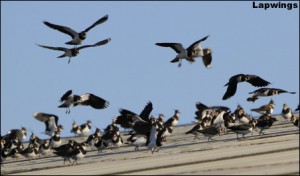
On the 9th the Lapwings on the roof of the local Industrial estate set a new record at three hundred and twenty.They always use the same roof which in our eyes looks no different to the many others nearby but to the Lapwings it is special.
The first Autumn Woodcock appeared in Hopwood woods on the 8th with twenty Redpolls feeding in the birches on the 15th. Three Short Tailed Field Voles were seen on the 11th which should keep the Owls and raptors going for some time. A plucked Wood Pigeon found on the 15th was probably the work of a female Sparrowhawk or a Peregrine.
This summer I was lucky enough to film two different Nightjars each with two young. As the first one was popular on my gallery I have included some photos from the second for this weeks gallery. Nightjars are very special birds and this summers fabulous weather ensured that both fledged their young. Click here
November 9, 2014 at 1:17 pm
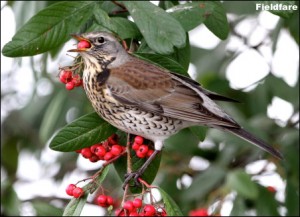
With a cooler period of weather mid week we had a November record of birds feeding in the garden on the 6th. Twenty three species fed during the day including 17 Goldfinches, 2 male Bullfinches, Wren, Great Spotted Woodpecker, Jay and the first Nuthatch of the year.
I saw my first Fieldfare of the winter on the 5th which is a very late date. Less than ten miles from Castleton, as the crow flies, is Winter Hill and the Horwich moors where, in the last week, 25000 Fieldfares have been counted heading South! It seems strange that only one bird has been tempted to stay by the abundance of local berries.
Last weekend on the moors above Uppermill three Rough Legged Buzzards from Scandinavia had taken up residence. I am not normally a twitcher but on Monday I drove over to have a look. Unfortunately whilst one bird was still present it came no nearer than eight hundred yards and I had to make do with the abundance of local Red Grouse, so much for twitching! Click here
 On Wednesday the coldest place in Britain was Leighton Moss at minus 5 °C and I was in the hide there before 8.00am. Everywhere looked superb in the hoar frost and better still as an Otter fished in a far off bay. Two Bitterns were seen but as usual they were too far away to provide a photo. A Kingfisher flew past the hide several times so for this weeks gallery I have provided some of the shots I took of Kingfishers this summer. Click here
On Wednesday the coldest place in Britain was Leighton Moss at minus 5 °C and I was in the hide there before 8.00am. Everywhere looked superb in the hoar frost and better still as an Otter fished in a far off bay. Two Bitterns were seen but as usual they were too far away to provide a photo. A Kingfisher flew past the hide several times so for this weeks gallery I have provided some of the shots I took of Kingfishers this summer. Click here

 Ringtail is the name given to a female Hen Harrier or a juvenile in its first winter when it is difficult to tell the sexes apart. The name comes from the white rump and is clearly visible as shown in this weeks photo. There is no doubt that any sightings of a Hen Harrier make a day out in the hills most memorable and I have included some of this years photos taken on Islay in this weeks gallery.
Ringtail is the name given to a female Hen Harrier or a juvenile in its first winter when it is difficult to tell the sexes apart. The name comes from the white rump and is clearly visible as shown in this weeks photo. There is no doubt that any sightings of a Hen Harrier make a day out in the hills most memorable and I have included some of this years photos taken on Islay in this weeks gallery.  Many people have been collecting my DVDs over the last five years and as I am to stop giving my film shows in fifteen months time I have decided to offer a special rate for them for Christmas.
Many people have been collecting my DVDs over the last five years and as I am to stop giving my film shows in fifteen months time I have decided to offer a special rate for them for Christmas.

